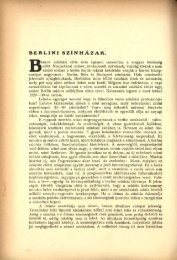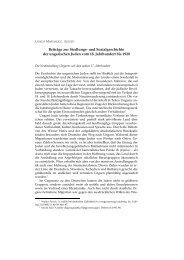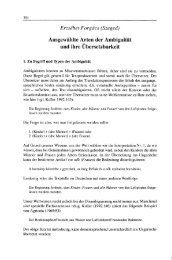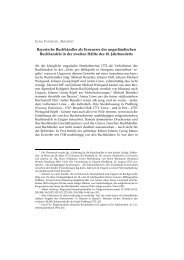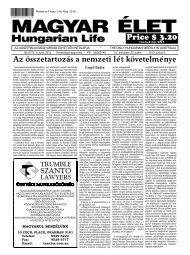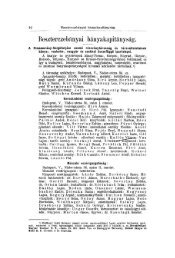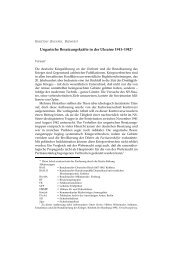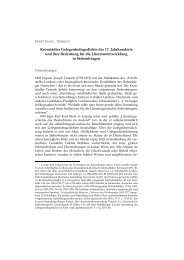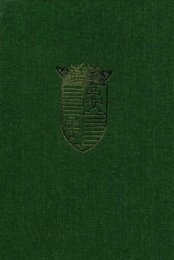Journal of Eurasian Studies - EPA
Journal of Eurasian Studies - EPA
Journal of Eurasian Studies - EPA
Create successful ePaper yourself
Turn your PDF publications into a flip-book with our unique Google optimized e-Paper software.
April‐June 2010 JOURNAL OF EURASIAN STUDIES Volume II., Issue 2.<br />
_____________________________________________________________________________________<br />
After that all kind <strong>of</strong> people visit the mother and they inquire about the sex <strong>of</strong> the new‐born child<br />
(whether it is a creature adjusting (and sewing together) sable (skins) or a creature shooting with bow<br />
stag(s)). Then they give her rice, tea and khadak. The mother on her turn answers them: if the child is a<br />
boy »it is a creature dragging the gold snare« and if it is a girl »it is a creature struggling with the needle«.<br />
The midwife comes (into the house) before the birth and for three days she does not go out to visit the<br />
neighbours; (and) the mother does not go out during 21 days neither far, nor into the pagoda, nor into the<br />
neighbourhood.<br />
When the new‐born child is seven nights old it is washed with salted tea, after (the second) seven<br />
nights with salted water, after (the third) seven nights with water mixed with milk and at last with the<br />
milk <strong>of</strong> the mother; the rationale behind (this practice) is that the child will have no pustules (eruption). If<br />
the parents (father, mother) are wealthy, rich noble people, the new‐born child is not suckled by the<br />
mother, who bore it, but they give it to one <strong>of</strong> their subjects giving her a good milking cow. The nursing<br />
parents nurse the child with cow milk and white sugar (and), they suckle the child with a suckling<br />
instrument made <strong>of</strong> ox horn. If the parents are poor, the mother suckles herself her child for three years<br />
from her breast.<br />
[Material prepared and translated by Borbála Obrusánszky. A short introduction into the life and<br />
œuvre <strong>of</strong> Gábor Bálint de Szentkatolna can be found in the very first issue <strong>of</strong> the <strong>Journal</strong> <strong>of</strong> <strong>Eurasian</strong><br />
<strong>Studies</strong>, pp. 7‐9. – Ed.]<br />
_____________________________________________________________________________________<br />
© Copyright Mikes International 2001‐2010 150


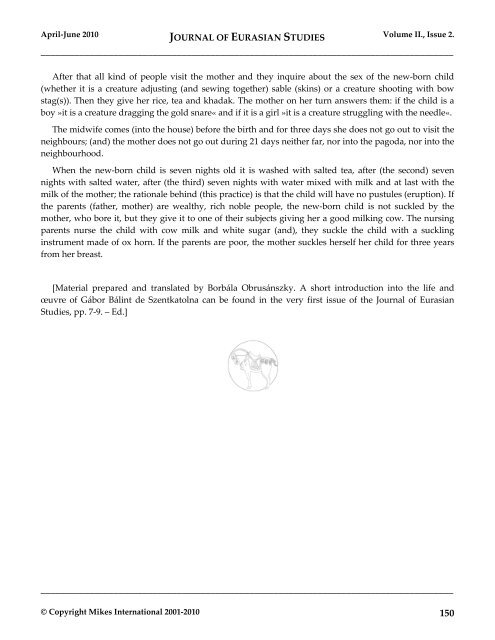
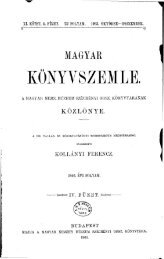
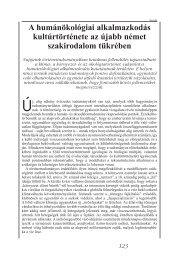
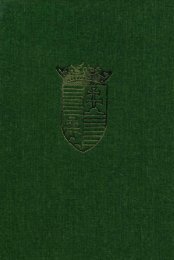
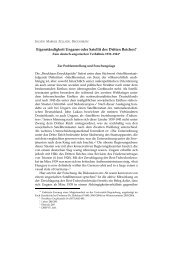
![Letöltés egy fájlban [36.8 MB - PDF] - EPA](https://img.yumpu.com/23369116/1/172x260/letoltes-egy-fajlban-368-mb-pdf-epa.jpg?quality=85)
